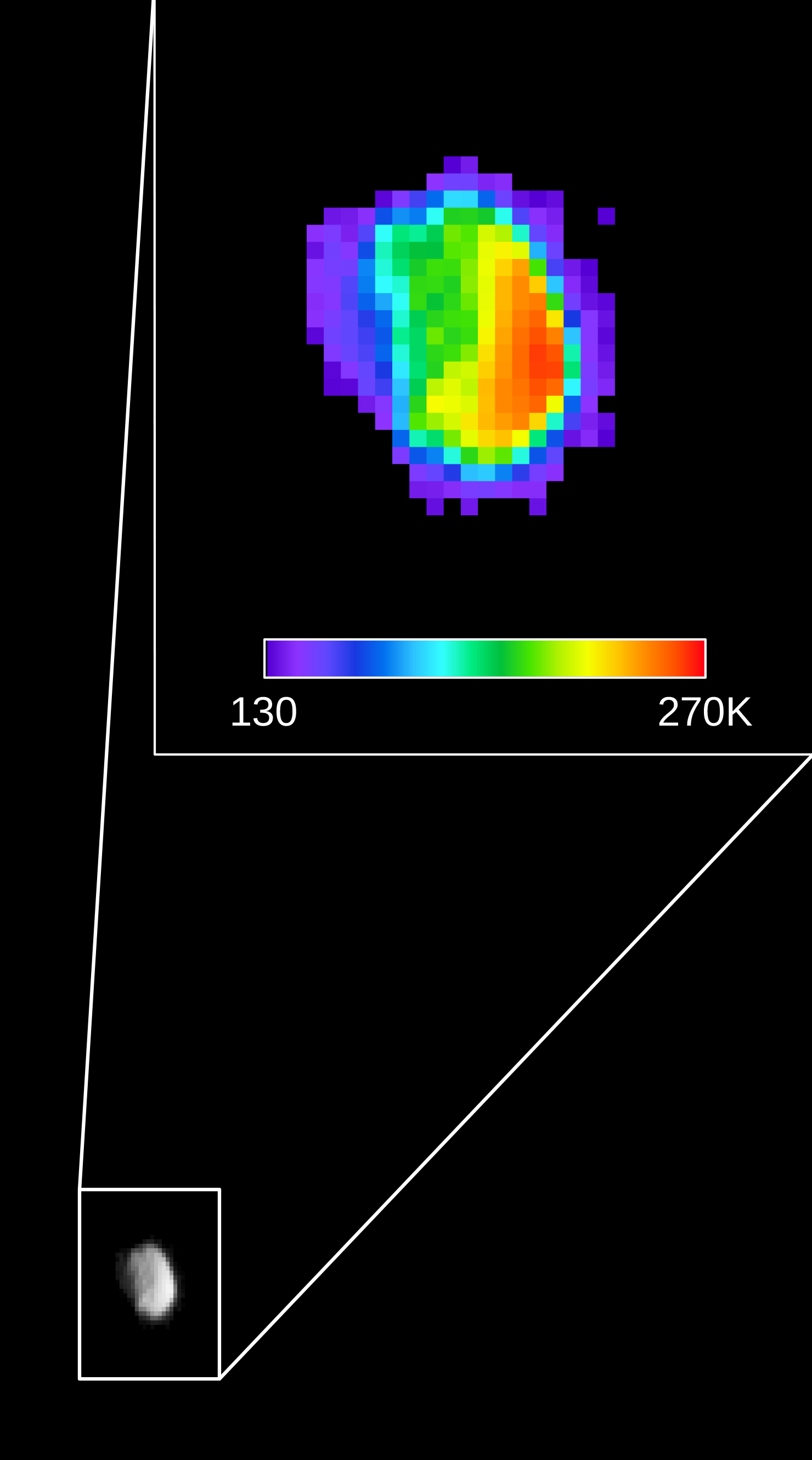Martian Moon Phobos in Thermal Infrared Image

| Credit | Image Credit: NASA/JPL-Caltech/ASU |
|---|---|
| Language |
|
Colors in this image of the Martian moon Phobos indicate a range of surface temperatures detected by observing the moon on Sept. 29, 2017, with the Thermal Emission Imaging System (THEMIS) camera on NASA's Mars Odyssey orbiter.
The left edge of the small moon was in darkness, and the right edge in morning sunlight. Phobos has an oblong shape with average diameter of about 14 miles (22 kilometers). Temperature information was derived from thermal-infrared imaging such as the grayscale image shown smaller at lower left with the moon in the same orientation. The color-coding merges information from THEMIS observations made in four thermal-infrared wavelength bands, centered from 11.04 microns to 14.88 microns.
The scale bar correlates color-coding to the temperature range on the Kelvin scale, from 130 K (minus 226 degrees Fahrenheit) for dark purple to 270 K (26 degrees F) for red. Researchers will analyze the surface-temperature information from this observation and possible future THEMIS observations to learn how quickly the surface warms after sunup or cools after sundown. That could provide information about surface materials, because larger rocks heat or cool more slowly than smaller particles do.
Researchers have been using THEMIS to examine Mars since early 2002, but the maneuver turning the orbiter around to point the camera at Phobos was developed only recently. Odyssey orbits Mars at an altitude of about 250 miles (400 kilometers), much closer to the planet than to Phobos, which orbits about 3,700 miles (6,000 kilometers) above the surface of Mars. The distance to Phobos from Odyssey during the observation was about 3,424 miles (5,511 kilometers).
THEMIS was developed by and is operated by a team based at Arizona State University, Tempe. NASA's Jet Propulsion Laboratory, Pasadena, California, manages the Mars Odyssey mission for NASA's Science Mission Directorate, Washington. Lockheed Martin Space Systems, Denver, built the orbiter and partners in its operation. JPL is a division of Caltech in Pasadena.
